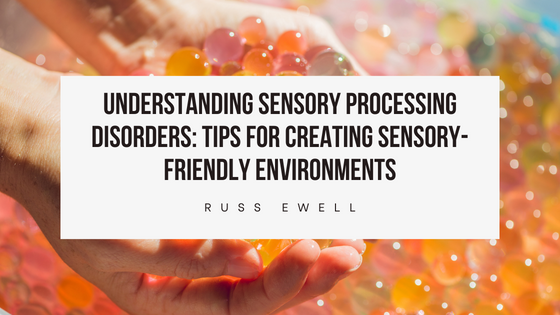Sensory processing disorders (SPD) are neurodevelopmental conditions that affect how the brain processes sensory information from the environment. Individuals with SPD may experience heightened sensitivity or diminished response to sensory stimuli, leading to difficulties in regulating their responses and behaviors. Creating sensory-friendly environments is essential to support individuals with SPD and promote their well-being. In this blog post, we’ll explore the basics of sensory processing disorders and provide tips for designing sensory-friendly spaces.
Understanding Sensory Processing Disorders: Sensory processing disorders encompass a range of conditions that affect how individuals perceive and respond to sensory stimuli. These stimuli include touch, sound, sight, taste, and smell. While sensory processing occurs in everyone, individuals with SPD may have difficulty processing and integrating sensory information, leading to challenges in daily functioning and social interactions.
Types of Sensory Processing Disorders:
There are three primary subtypes of sensory processing disorders:
- Sensory Overresponsivity: Individuals with sensory overresponsivity may experience heightened sensitivity to sensory stimuli, leading to exaggerated or aversive responses. For example, they may become overwhelmed by loud noises, bright lights, or certain textures.
- Sensory Underresponsivity: Conversely, individuals with sensory underresponsivity may have a diminished response to sensory stimuli, leading to a lack of awareness or responsiveness. They may fail to notice or react to sensory input, such as pain or temperature changes.
- Sensory Seeking: Some individuals with sensory processing disorders may engage in sensory-seeking behaviors, actively seeking out intense or novel sensory experiences. They may crave sensations like deep pressure, movement, or tactile stimulation.
Creating Sensory-Friendly Environments: Designing sensory-friendly environments can help individuals with SPD feel more comfortable, safe, and supported in their surroundings. Here are some tips for creating sensory-friendly spaces:
- Reduce Sensory Overload: Minimize excessive sensory stimuli in the environment, such as loud noises, bright lights, or cluttered spaces. Use soft lighting, muted colors, and acoustic panels to create a calming atmosphere.
- Provide Sensory-Friendly Tools: Offer sensory-friendly tools and equipment to support individuals’ sensory needs. This may include fidget toys, weighted blankets, noise-canceling headphones, or textured surfaces for tactile stimulation.
- Offer Choice and Control: Empower individuals with SPD to have control over their sensory environment. Allow them to choose their preferred seating, lighting, or temperature settings to accommodate their sensory preferences.
- Create Quiet Spaces: Designate quiet, designated spaces where individuals can retreat to when they need a break from sensory stimulation. These spaces should be free from loud noises, distractions, and visual clutter.
- Incorporate Sensory Activities: Integrate sensory activities into daily routines to promote sensory regulation and engagement. Activities like deep breathing exercises, mindfulness techniques, or sensory bins can help individuals regulate their sensory responses.
- Educate and Raise Awareness: Foster understanding and acceptance of sensory processing disorders within the community. Educate others about the challenges faced by individuals with SPD and promote inclusive practices in schools, workplaces, and public spaces.
Creating sensory-friendly environments is essential to support individuals with sensory processing disorders and promote their well-being. By understanding the unique sensory needs of individuals with SPD and implementing sensory-friendly design principles, we can create inclusive spaces where everyone feels comfortable, safe, and valued. Together, we can work towards building a more sensory-friendly world for individuals of all abilities.

